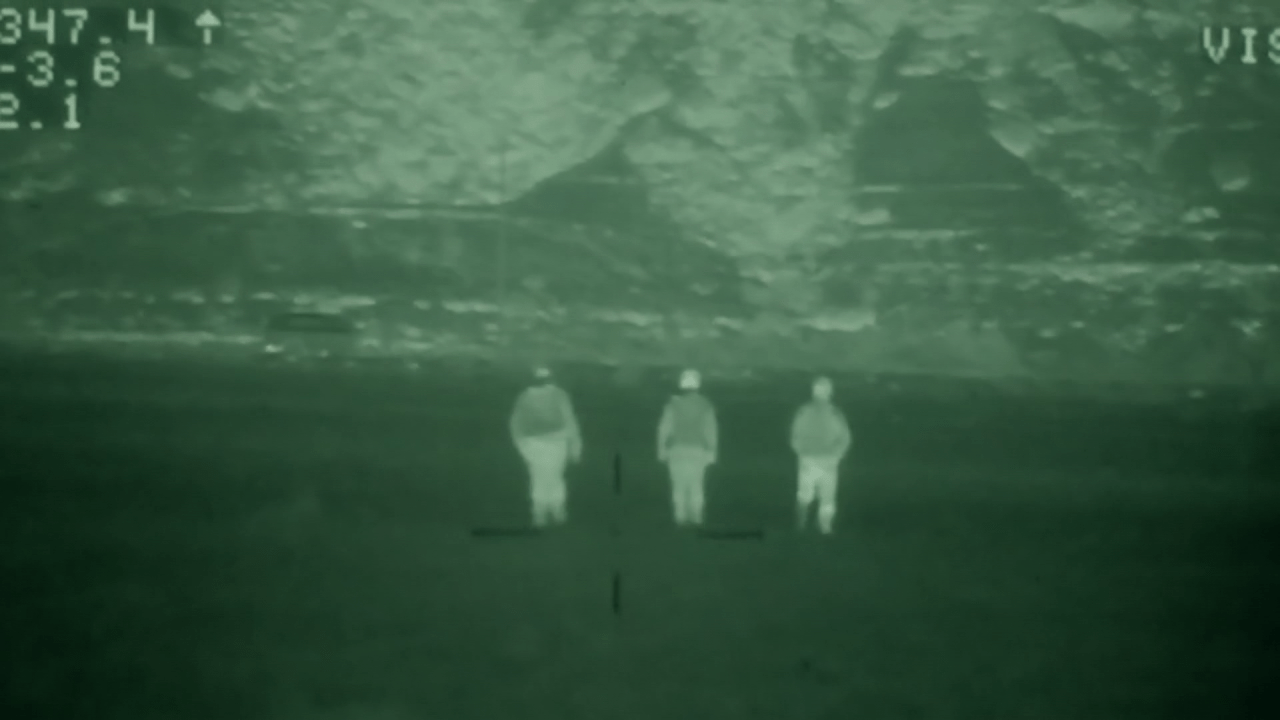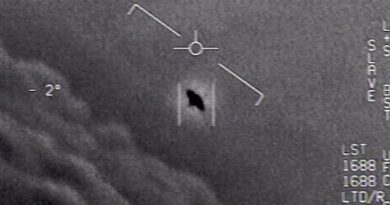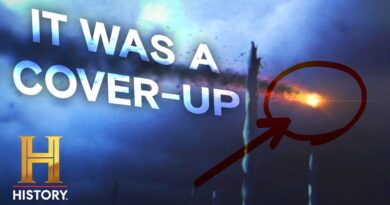What is Kona Blue? The proposed Las Vegas UFO technology program unveiled

LAS VEGAS (KLAS) — Information has recently surfaced shedding light on an ambitious program that would have researched UFO technology in southern Nevada, aiming to exploit the tech, interview witnesses to extraterrestrial activities, and study the physical and psychological effects of the encounters.
Code-named “Kona Blue,” Las Vegas would have been in the eye of the storm when it came to UFO technology investigations if the program had come to fruition. But why the transparency now? Dr. James Lacatski, formerly a Defense Intelligence Agency (DIA) analyst and missile expert, has some insight.
AAWSAP ORIGINS
“It was completely UFO-related,” Lacatski said regarding Kona Blue. In 2007, Lacatski became interested in reports of UFO activity at certain hotspots, including a property in northeast Utah known by its nickname Skinwalker Ranch.
Lacatski designed and championed a highly secretive program called the Advanced Aerospace Weapons System Application Program (AAWSAP), an acronym that purposefully omits terms regarding UFOs. He met with Nevada Senator Harry Reid, who, along with two Senate colleagues, secured $22 million in funds. With the contract awarded to a subsidiary of Bigelow Aerospace, AAWSAP became the largest acknowledged UFO investigation in history.
AAWSAP boasted 50 full-time employees, most based in southern Nevada, and created the world’s largest UFO data warehouse. It spawned more than 100 technical papers on different aspects of UFO technology and related phenomena. DIA has not released any of those papers.
However, Lacatski, the overall project manager, and his colleague Dr. Colm Kelleher, the onsite manager in Las Vegas, have co-authored two books about AAWSAP, reporting as much as government officials would allow.
In his 2023 book, Lacatski casually revealed that in 2011, he informed a U.S. senator and a high-ranking official that “the United States was in possession of a craft of unknown origin and had successfully gained access to its interior. This craft had…. no intakes, exhaust, wings, or control surfaces …(no) engine, fuel tanks, or fuel.”
In other words, the U.S. had a flying saucer.
Since that revelation, Lacatski has declined to say anything unauthorized by the Pentagon.
“There was more to it, considerably more to that discussion about what the situation was,” Lacatski said. “We can’t go into that.”
However, thanks to a surprise release from the All-domain Anomaly Resolution Office (AARO), the Pentagon’s current UFO program, the public is more able to read between the lines. The formerly top-secret document, declassified in February by Homeland Security, describes Kona Blue, a program designed by Lacatski, Kelleher, and other AAWSAP colleagues, as an ambitious plan to study and exploit UFO technology.
KONA BLUE
The papers describing Kona Blue, which would function as a successor to AAWSAP, did not mention UFOs or UAPs by name, but there are clues. For one, the documented purpose of Kona Blue was to “identify potentially disruptive technologies” by analyzing “material of unique origin and engineering.” Success in doing so would depend on gaining access to said materials.
Kona Blue would establish a system to collect sightings of such technology, including at locations of frequent reports. The papers reference advanced technology that has already been recovered and a plan to interview those familiar with those recoveries and how they might recover more. One section notes this recovered technology exists only within special access programs.
The program would have created a medical division to study the physical and psychological effects of encounters with advanced aerial vehicles on humans, including deaths and injuries. Notably, Kona Blue experts would be tasked with handling and examining “unusual and unique biological specimens.” It is not explicitly stated what the specimens were, but it is not difficult to infer.
Meant to be based in Las Vegas, the document notes that buildings already cleared to handle top secret materials were standing by. Businessman Robert Bigelow reportedly spent more than $1 million to bring his facilities into compliance with security requirements in preparation for the AAWSAP effort. His team had expected to receive unspecified but highly sensitive materials.
In 2009, Senator Harry Reid wrote to the Department of Defense to ask for special classification for the DIA program. Officials in Washington were alerted, opposition mounted, and the program’s budget disappeared. As a result, in 2011, Lacatski, Kelleher, and others tried to find another home for Kona Blue.
Documents show the Department of Homeland Security was briefed about what AAWSAP had learned. Dr. Tara O’Toole, deputy secretary for science and technology and noted scientist, was impressed enough to sign off on Kona Blue. However, as with AAWSAP, when top officials began knocking on doors to ask for access to the special materials, opposition to Kona Blue quickly mobilized and the proposed program was stopped dead.
Lacatski was measured when he spoke of the special materials officials wanted to access.
“There’s material, and there’s material,” he said. “Are you talking about material to be investigated? In other words, pieces falling off flying saucers? Or are you talking about full-blown craft? You know, there’s a big difference.”
BLUE LEGACY
Kona Blue was declassified by AARO to discredit evidence and testimony provided by witnesses and whistleblowers. Dr. Sean Kirpatrick, former head of AARO, said the people who tell of crashed saucers were all referring to Kona Blue.
However, as the program never existed and only a handful of people even knew it was proposed, it seems unlikely that witnesses who reported crashed saucers were seeing the results of Kona Blue.


